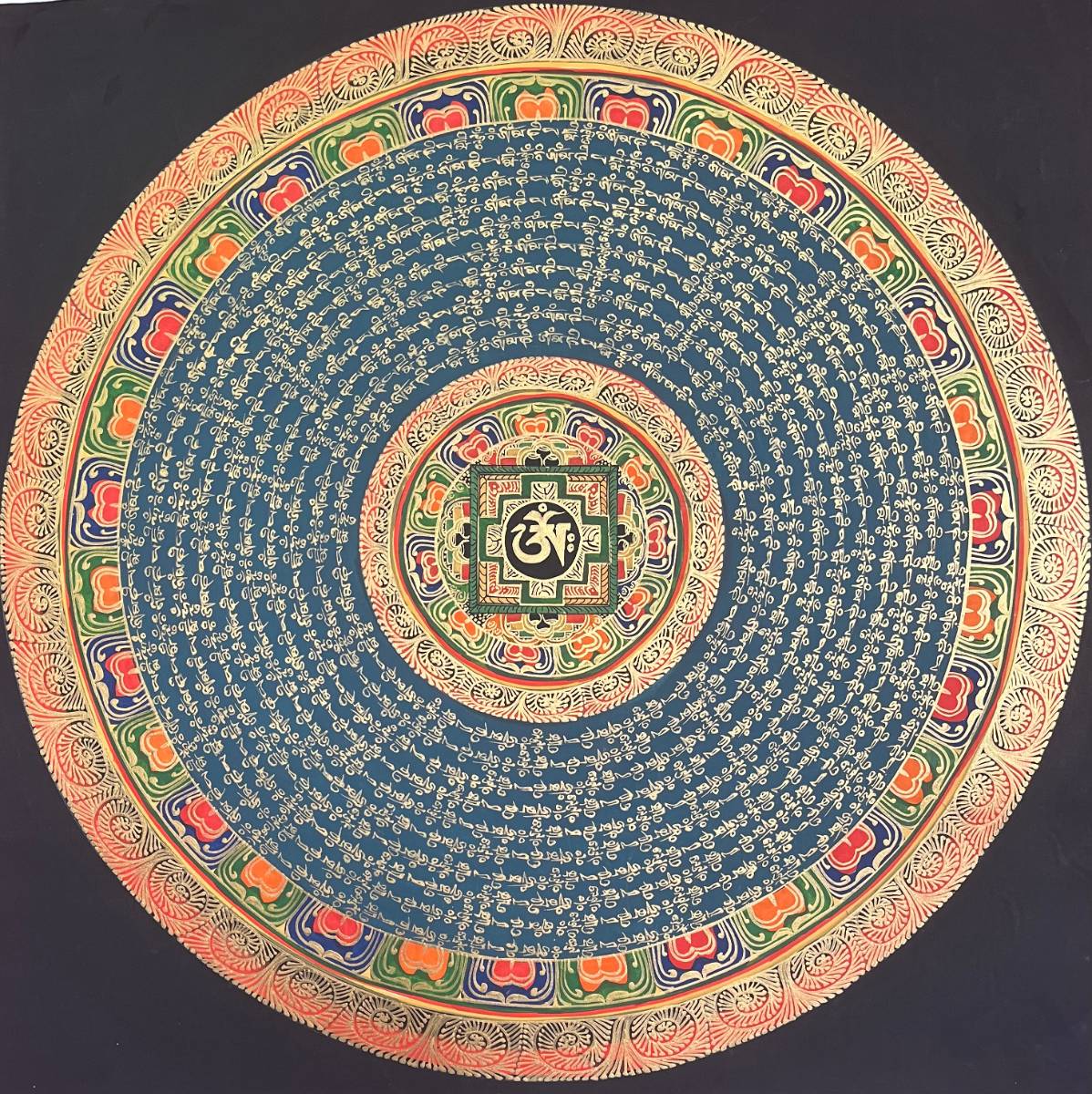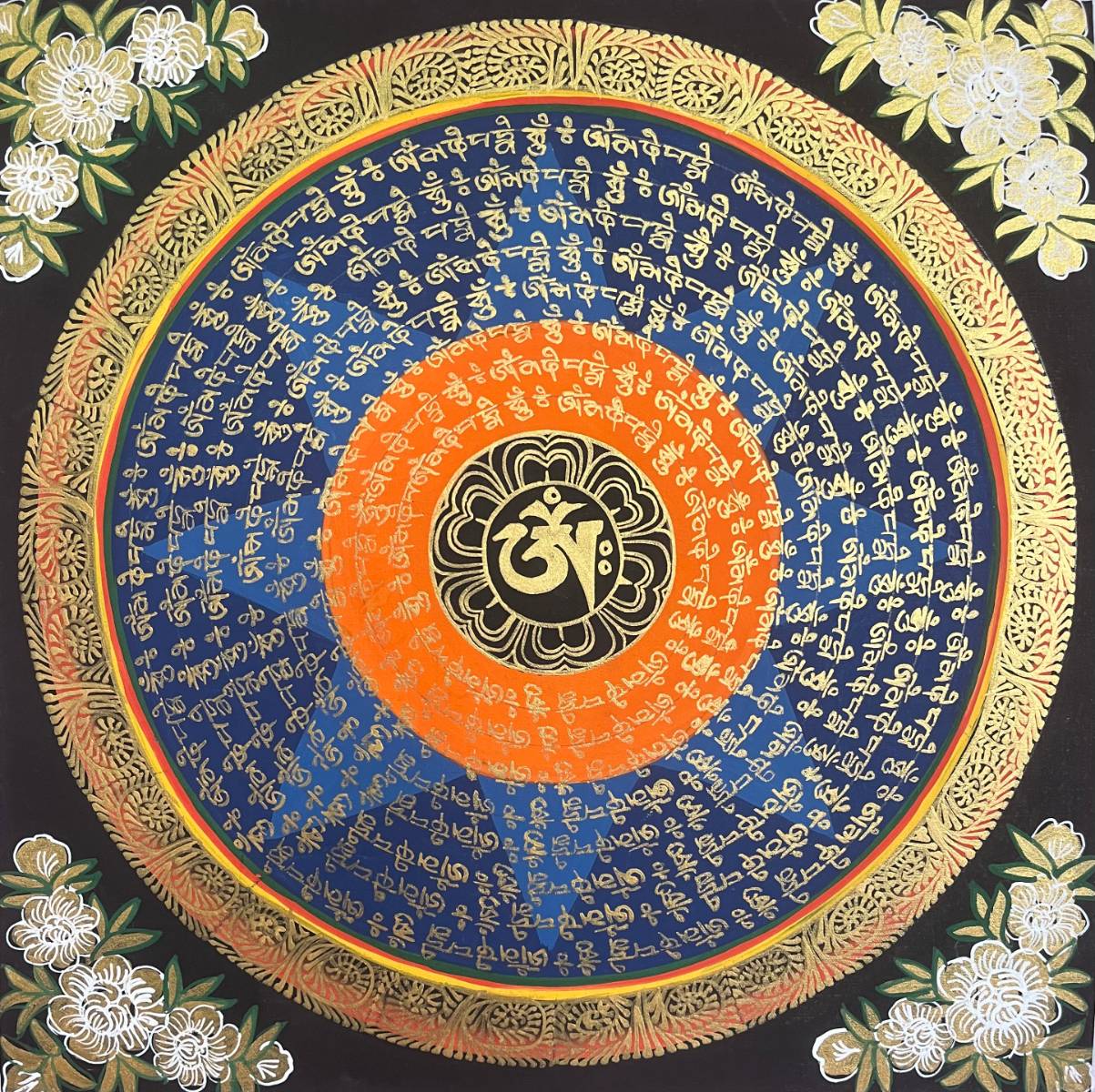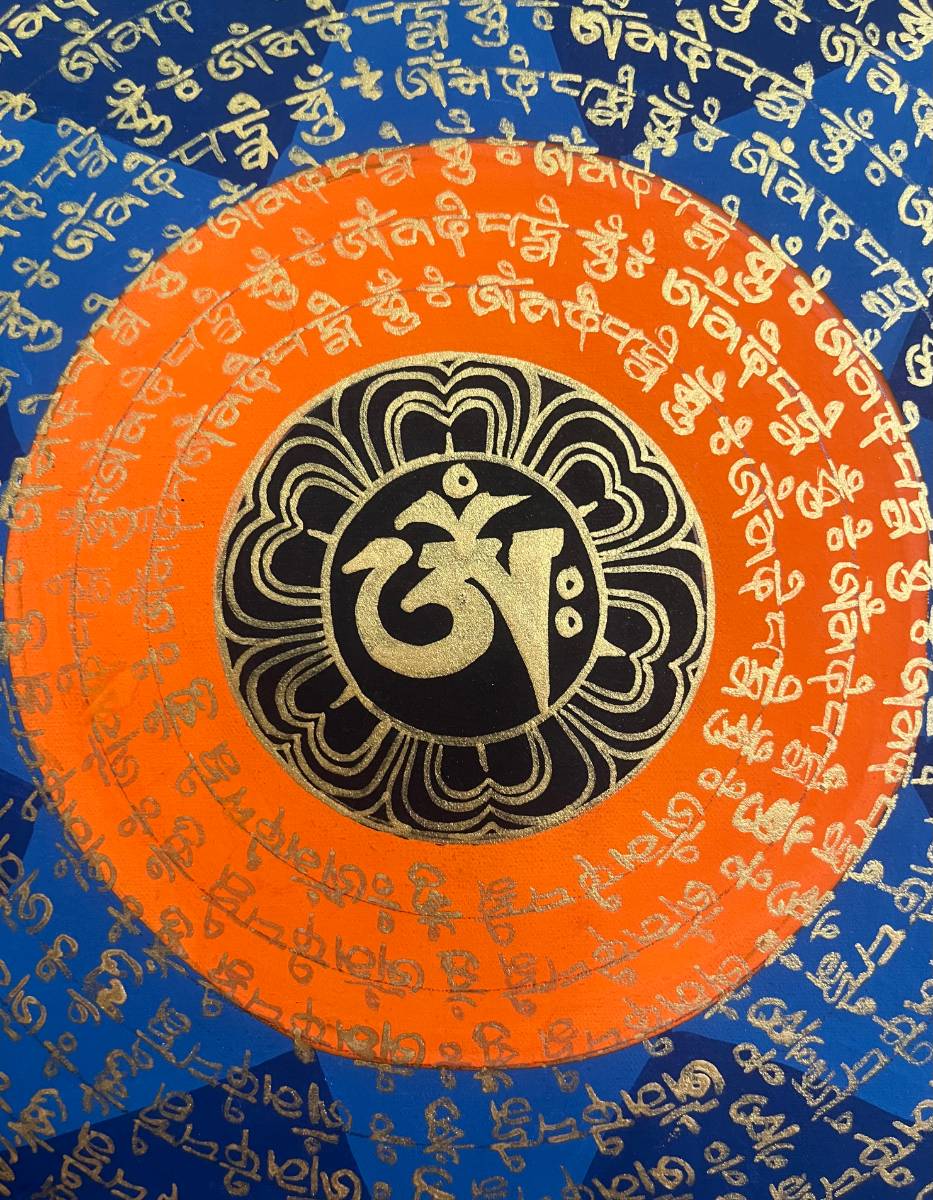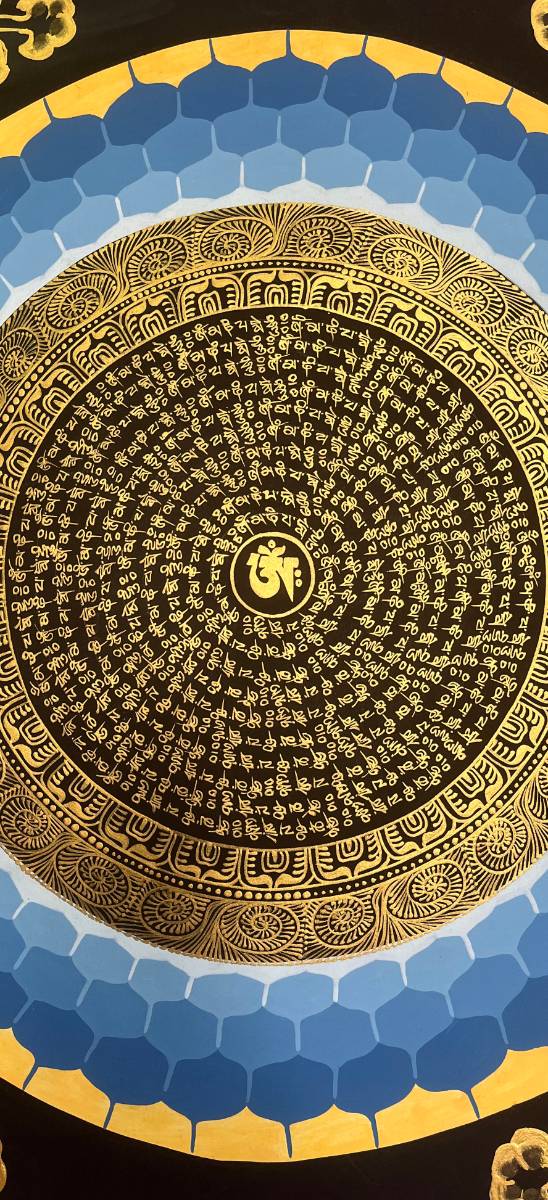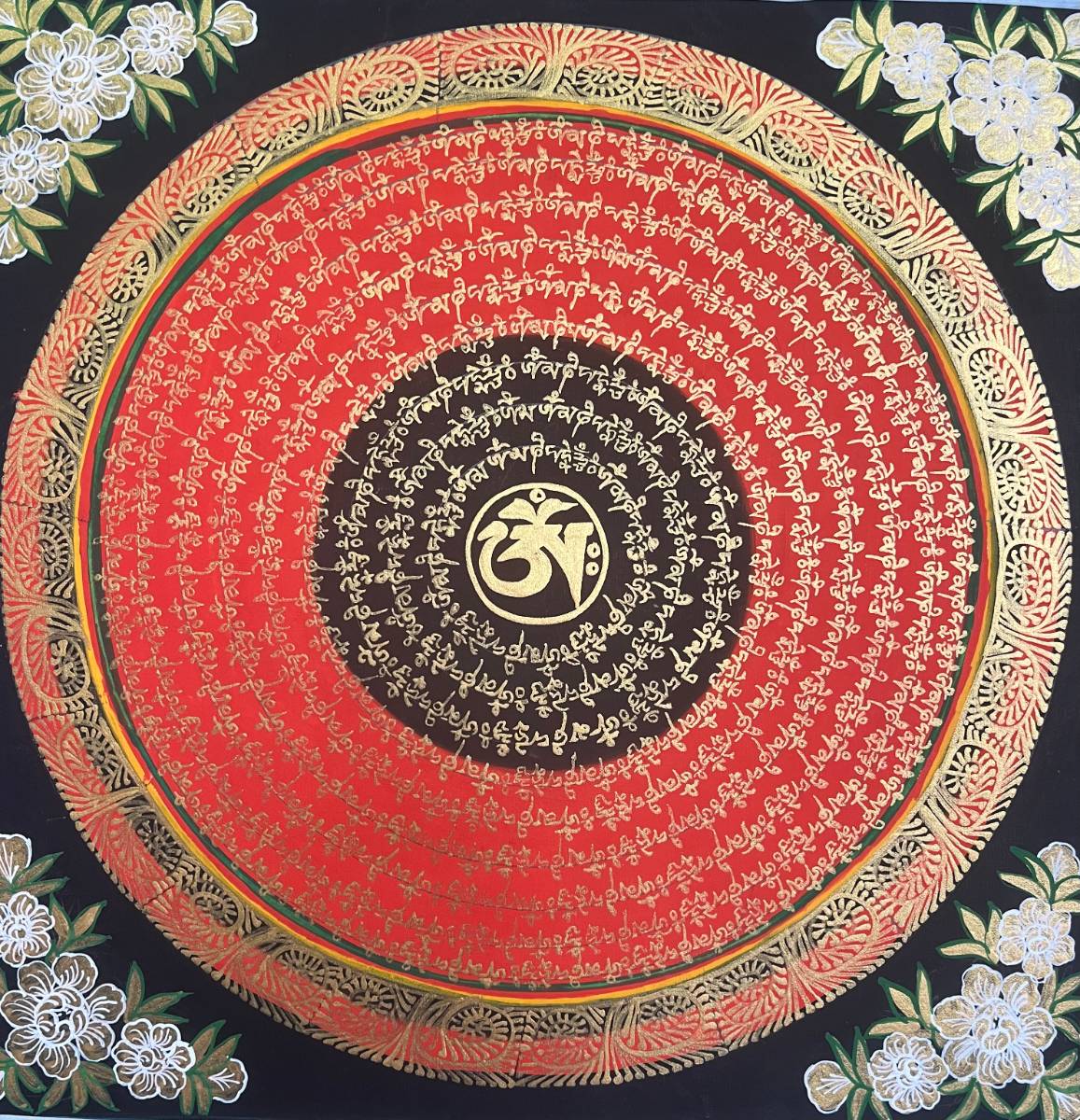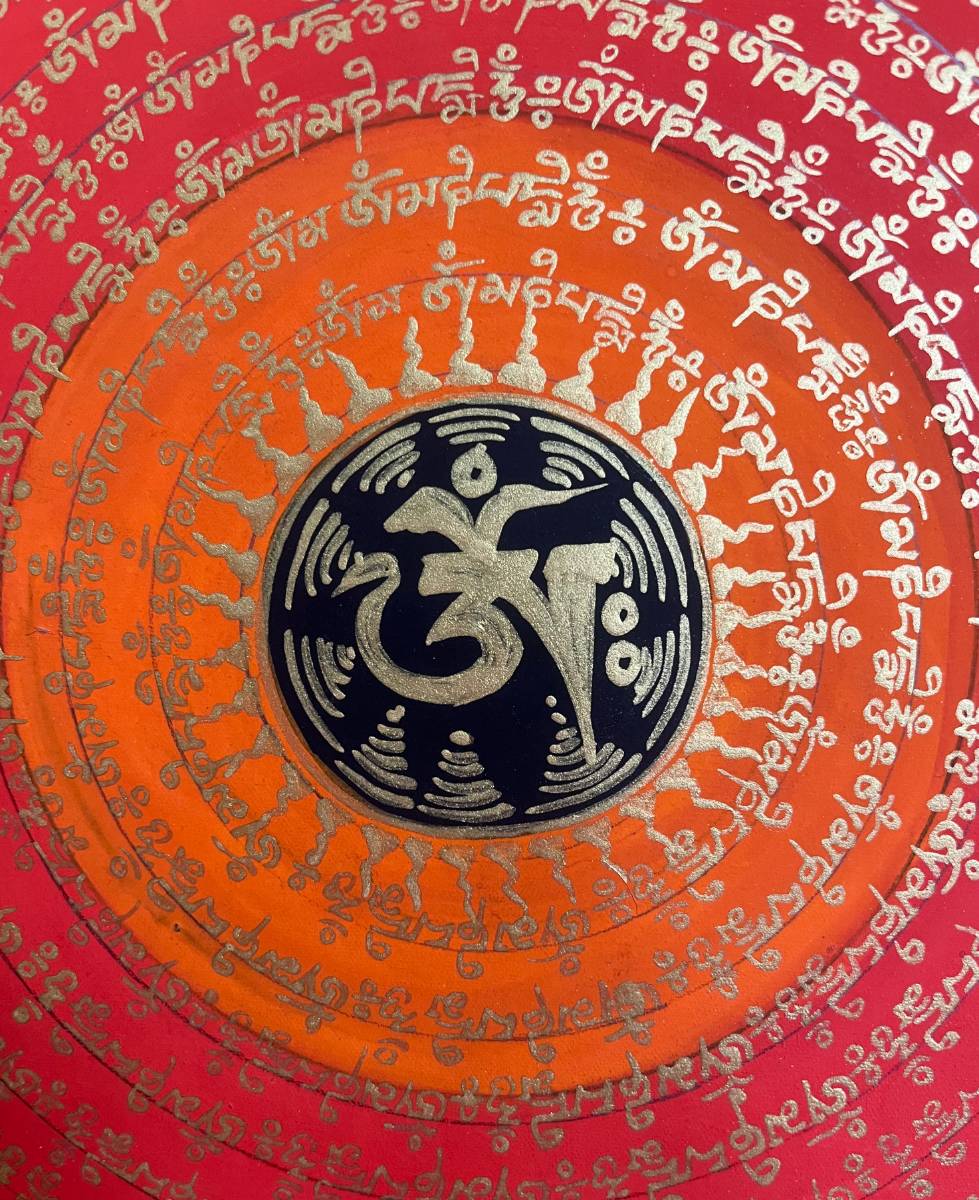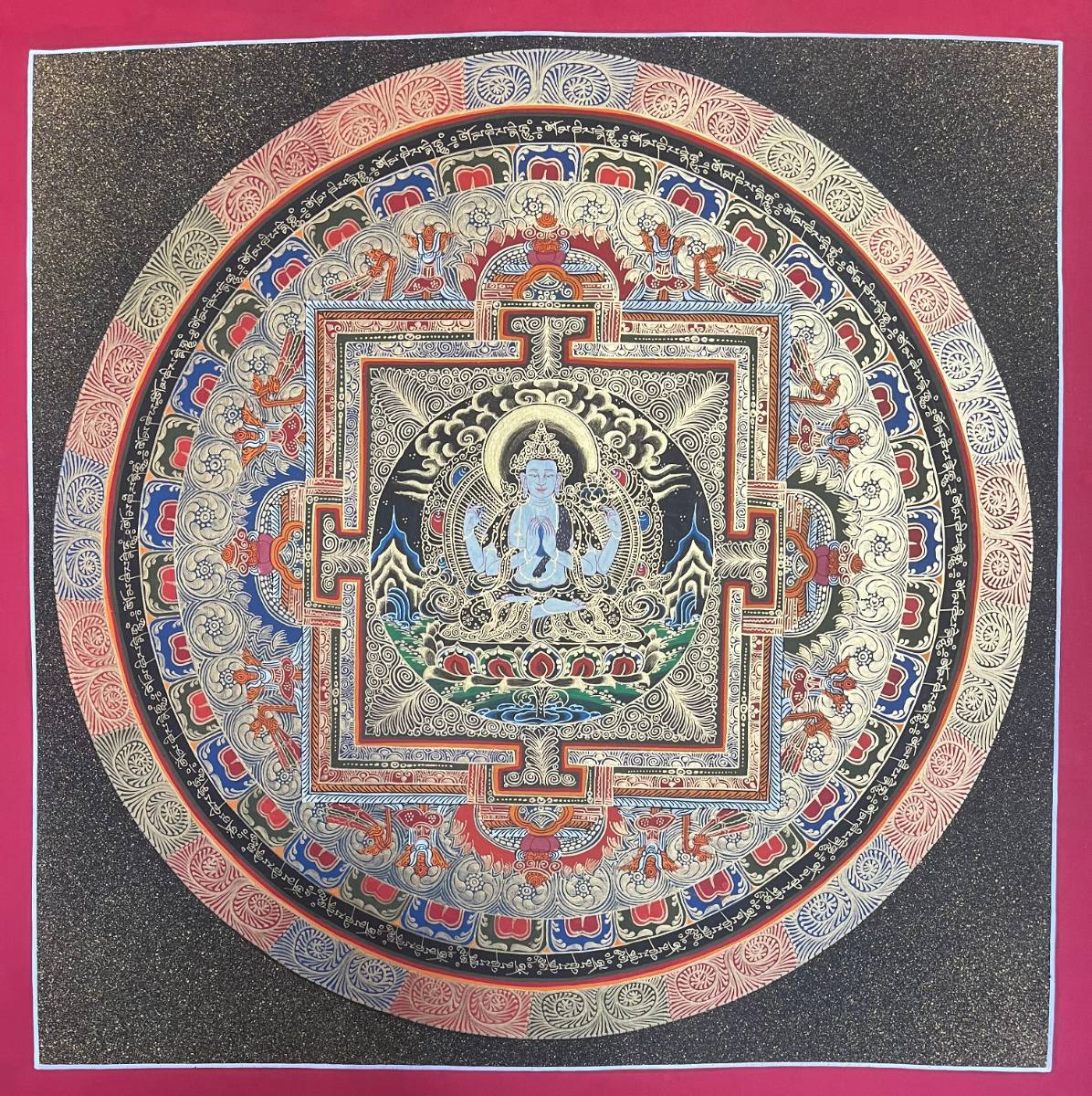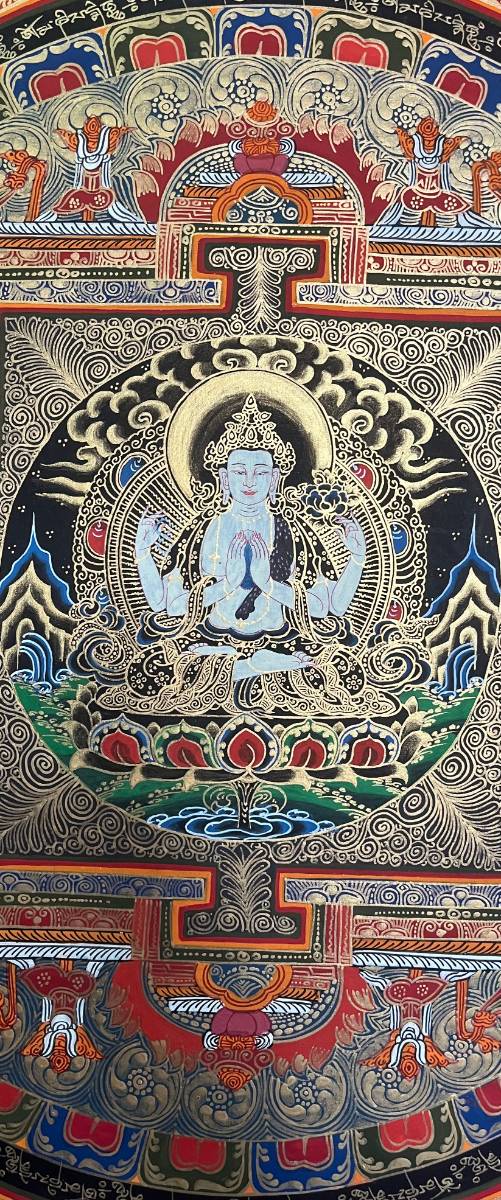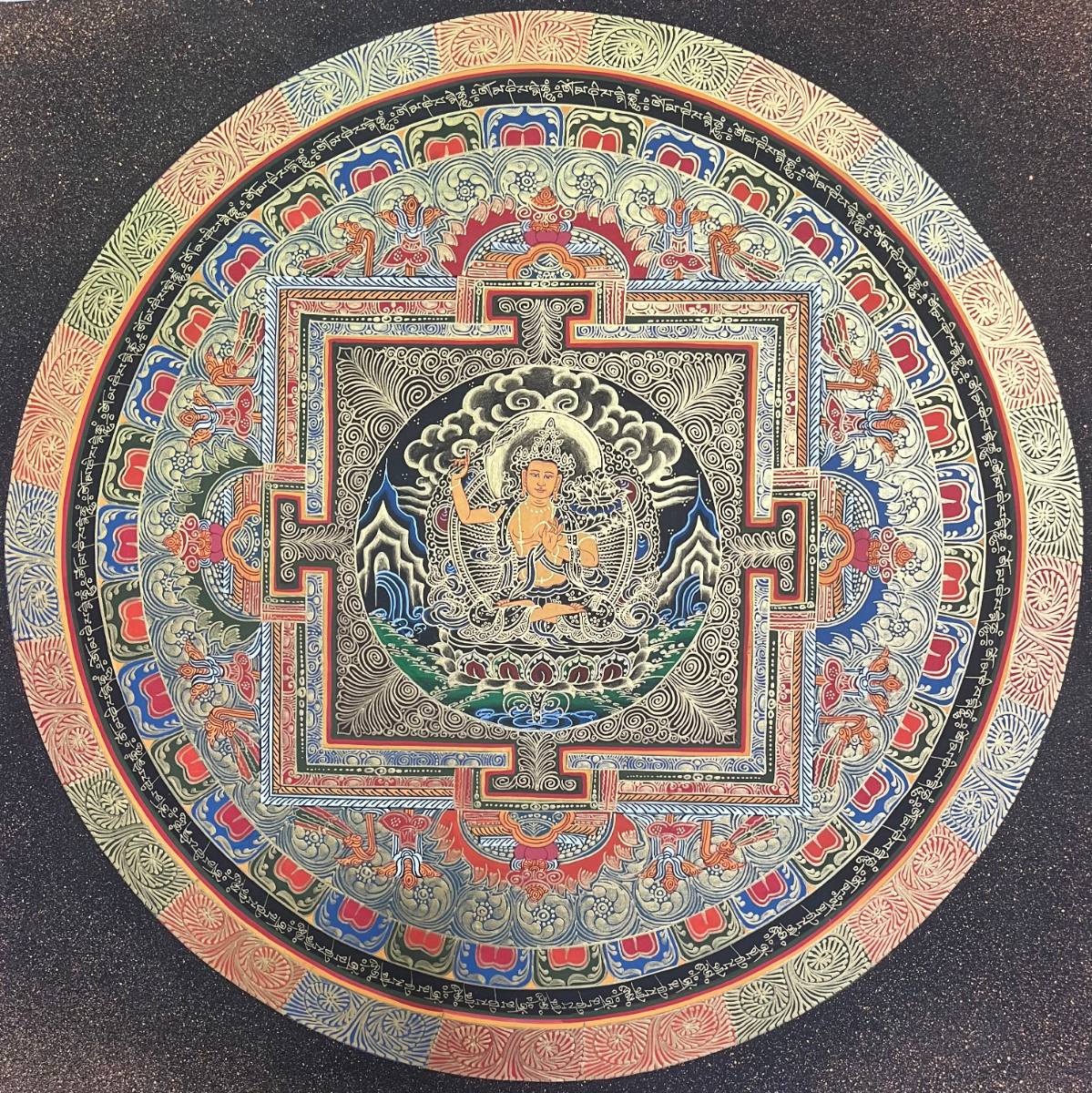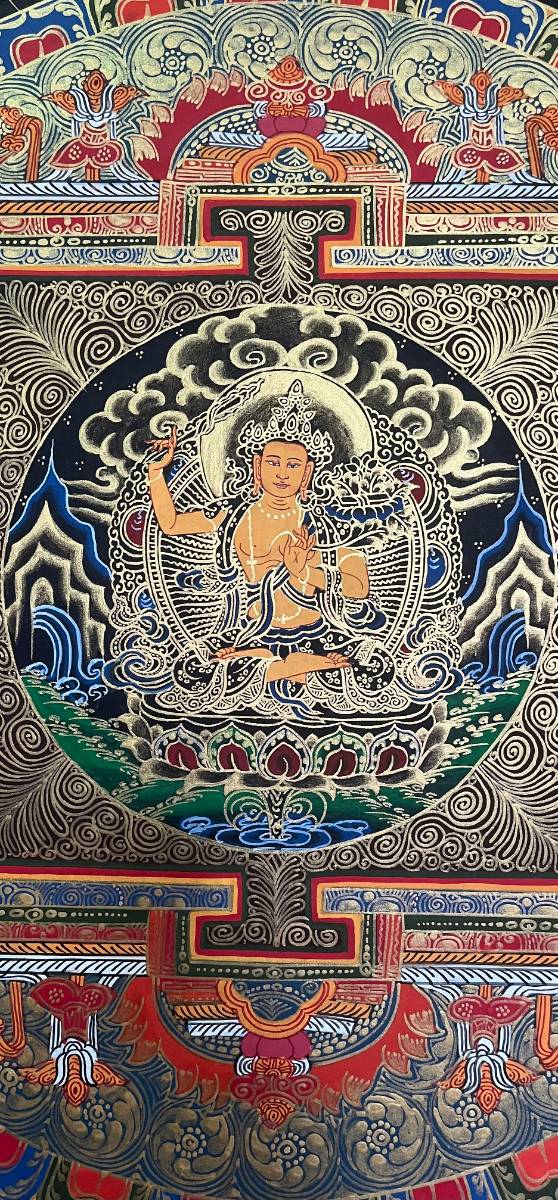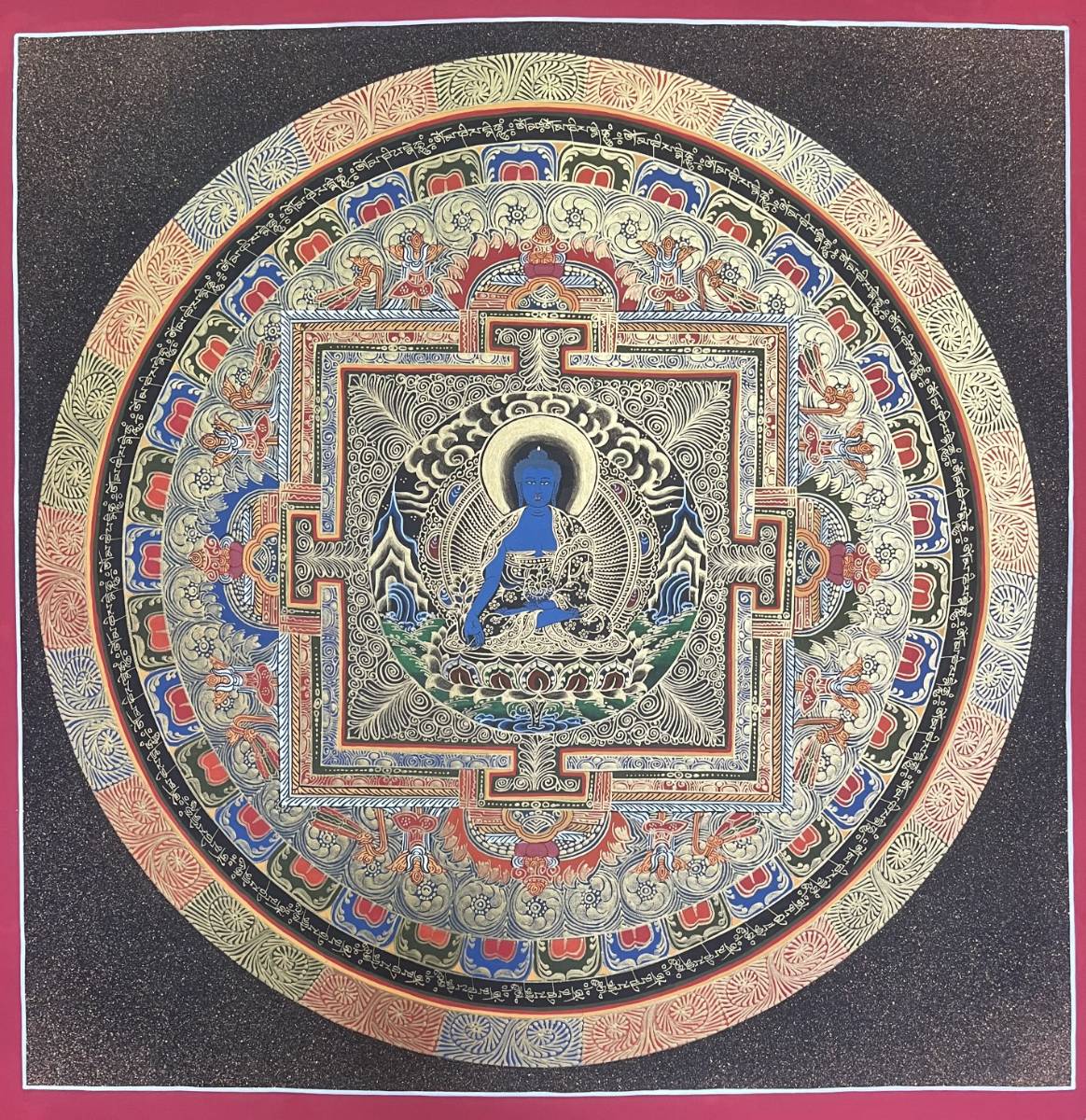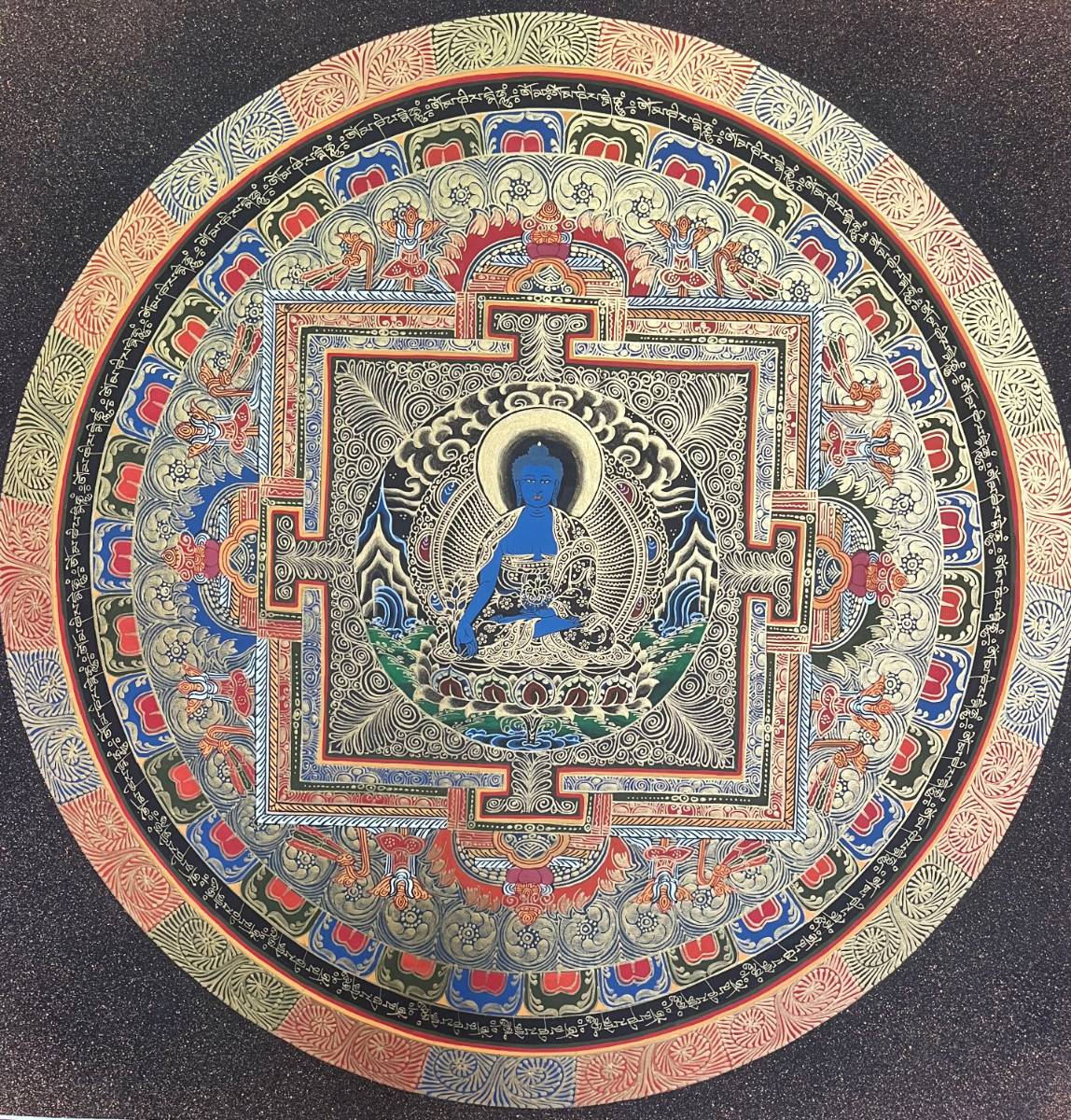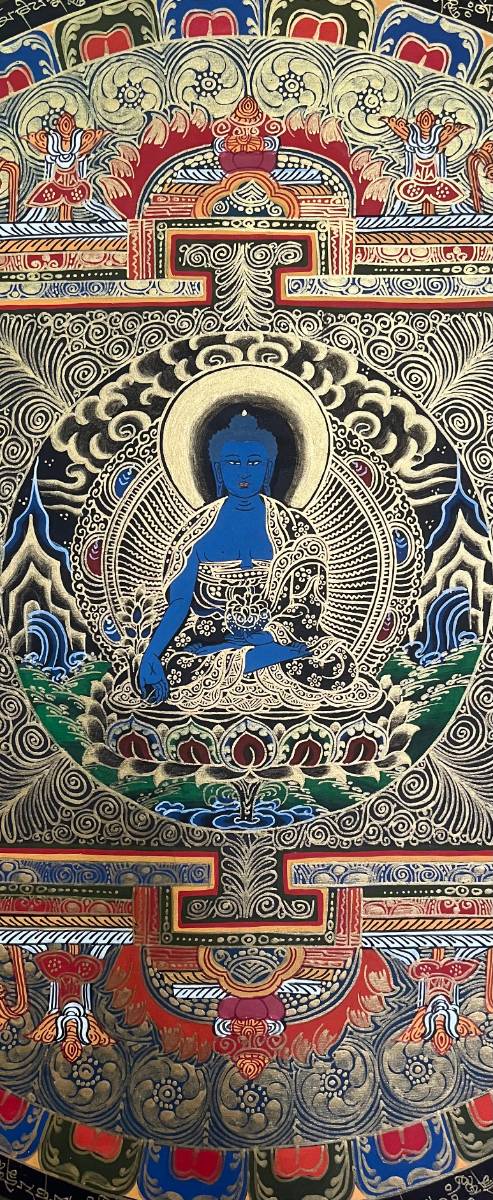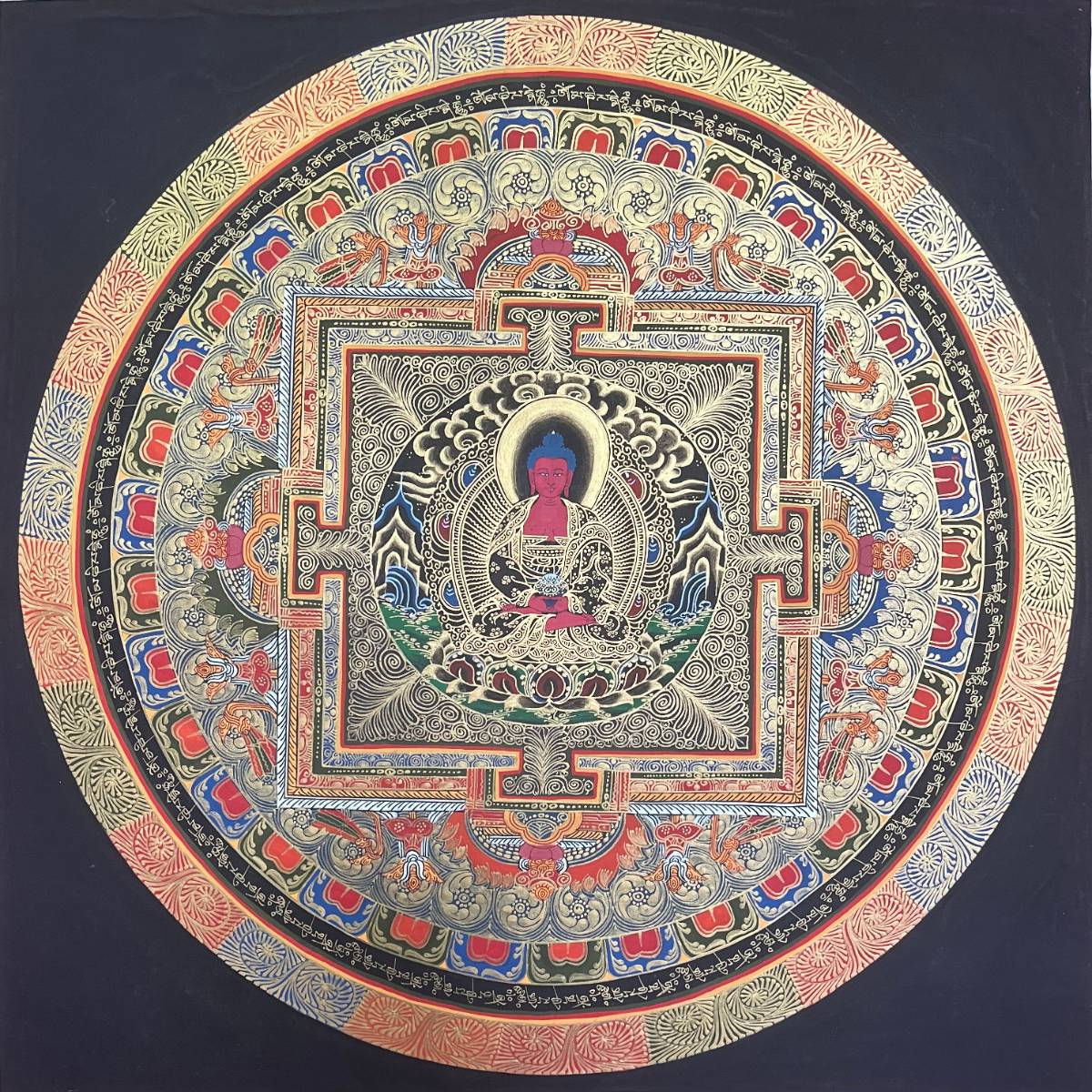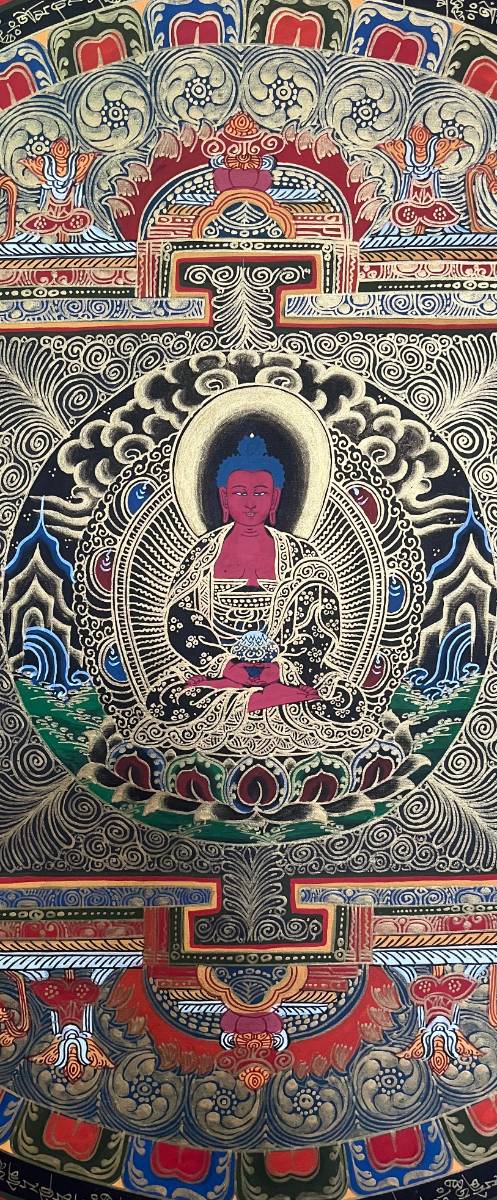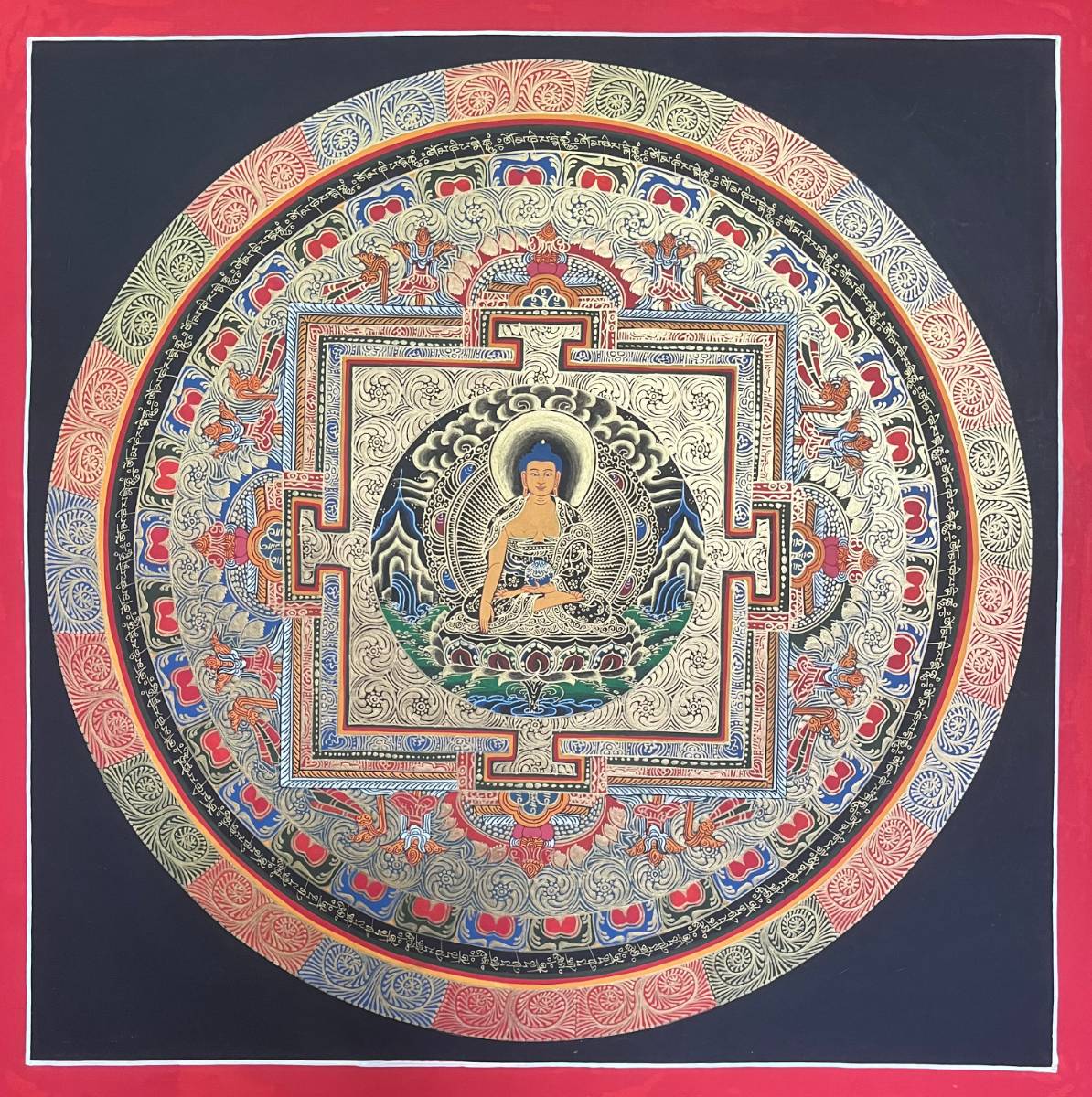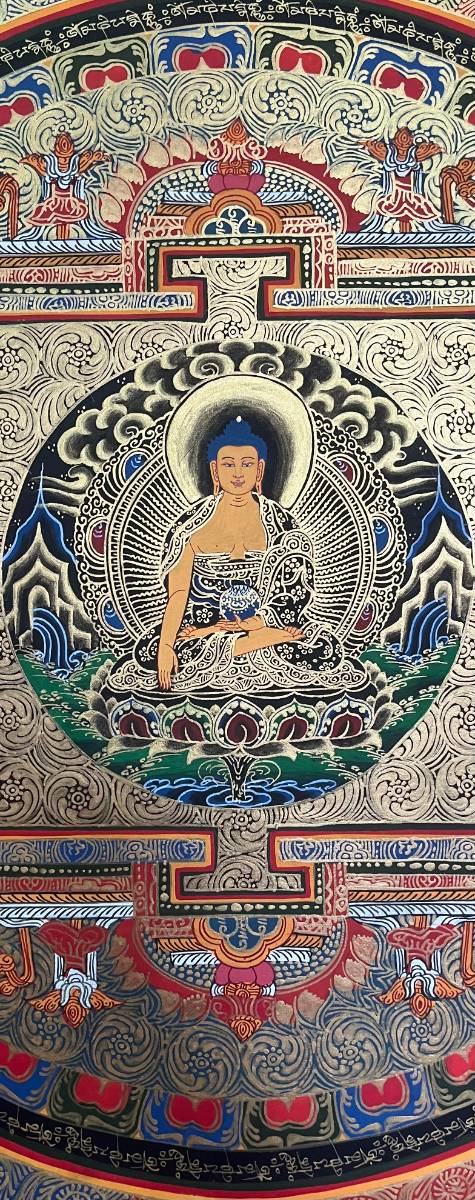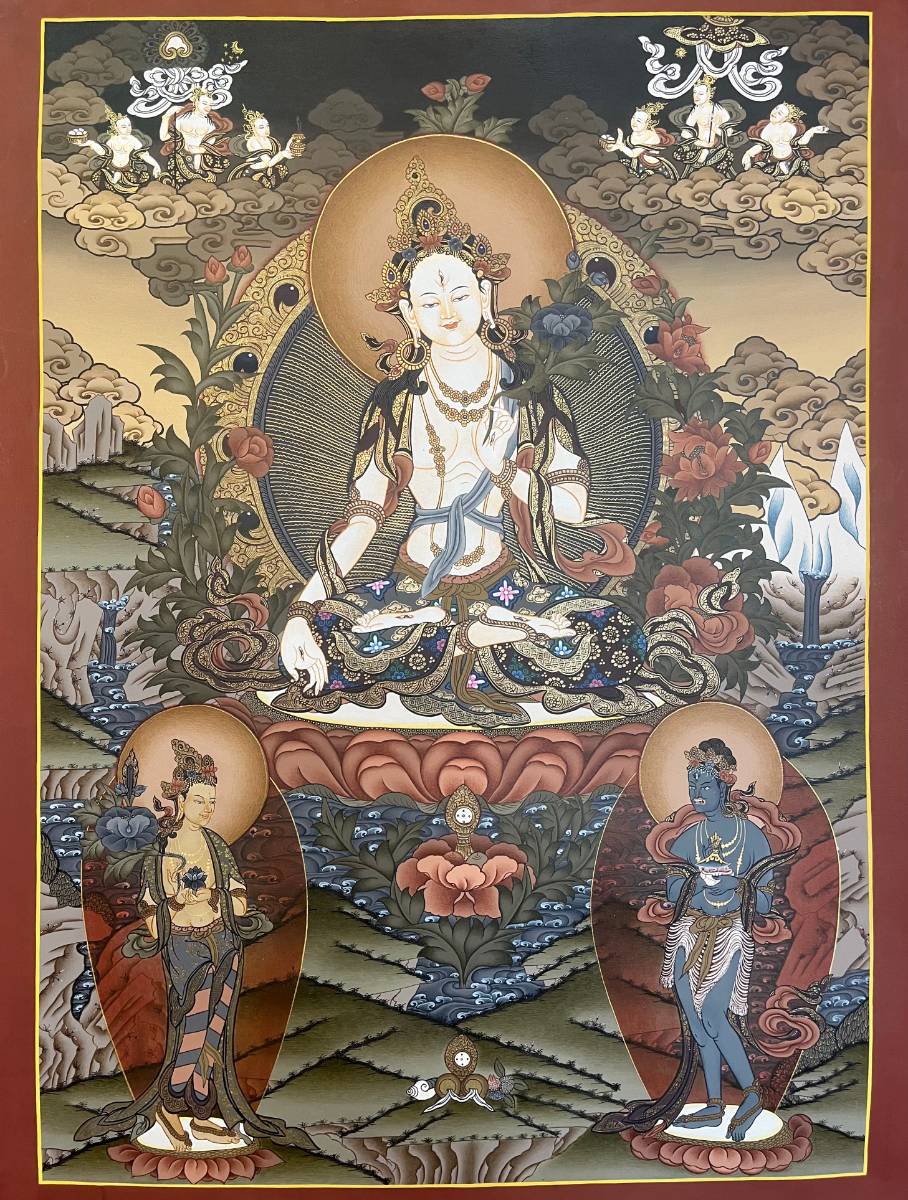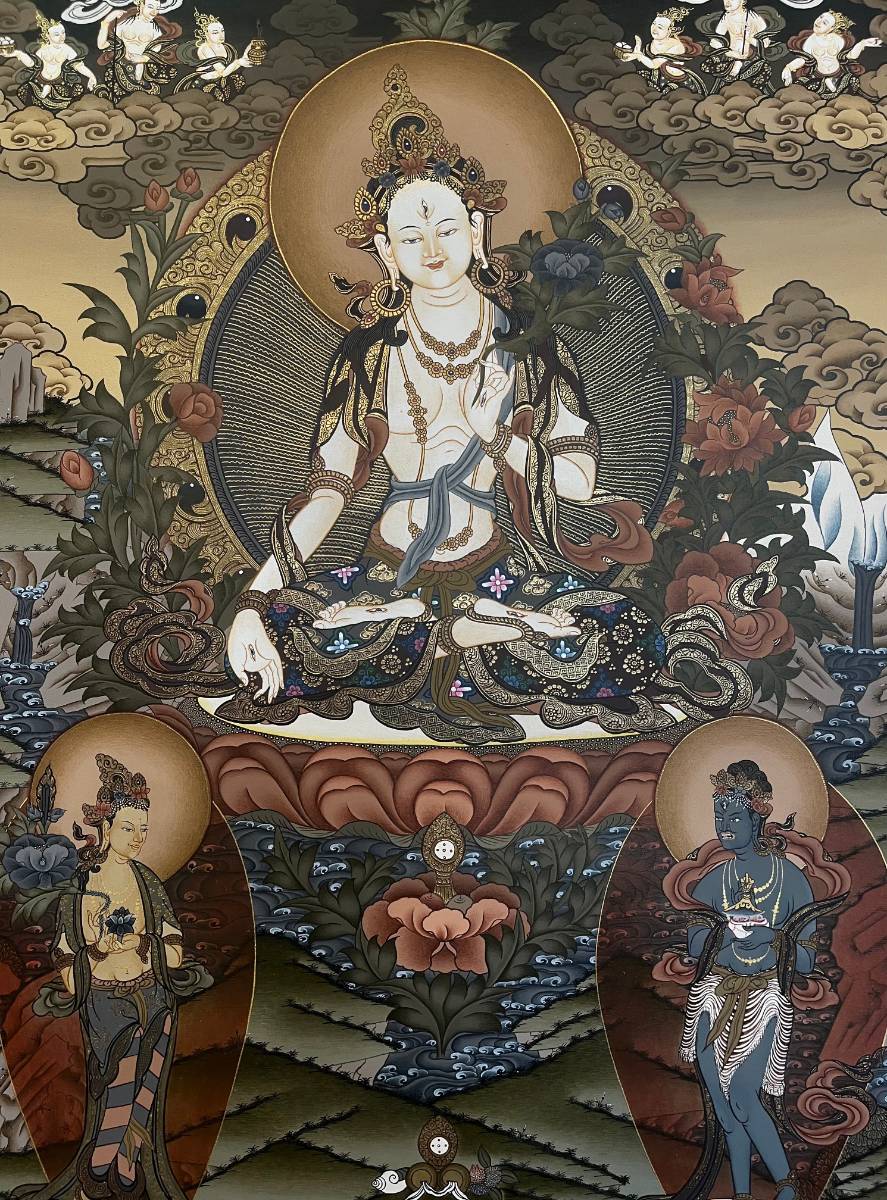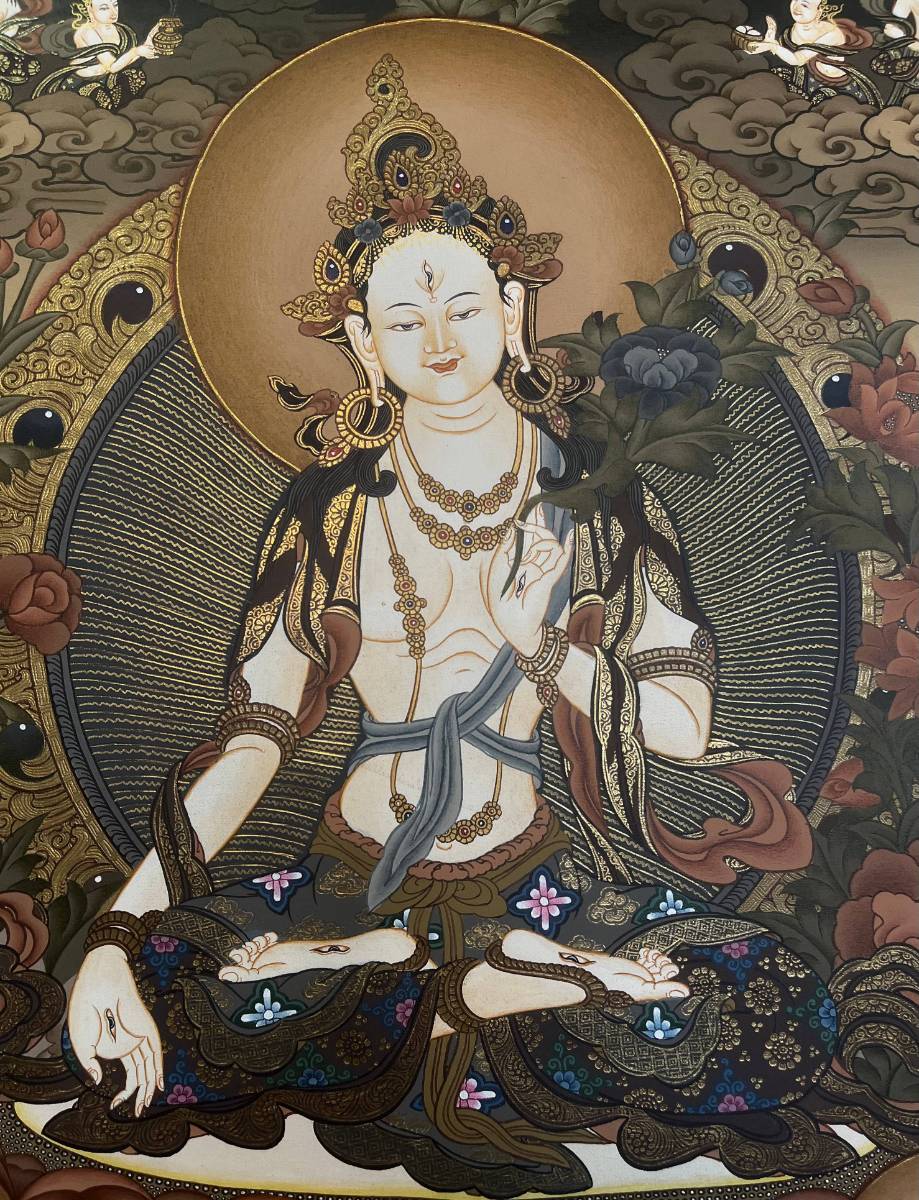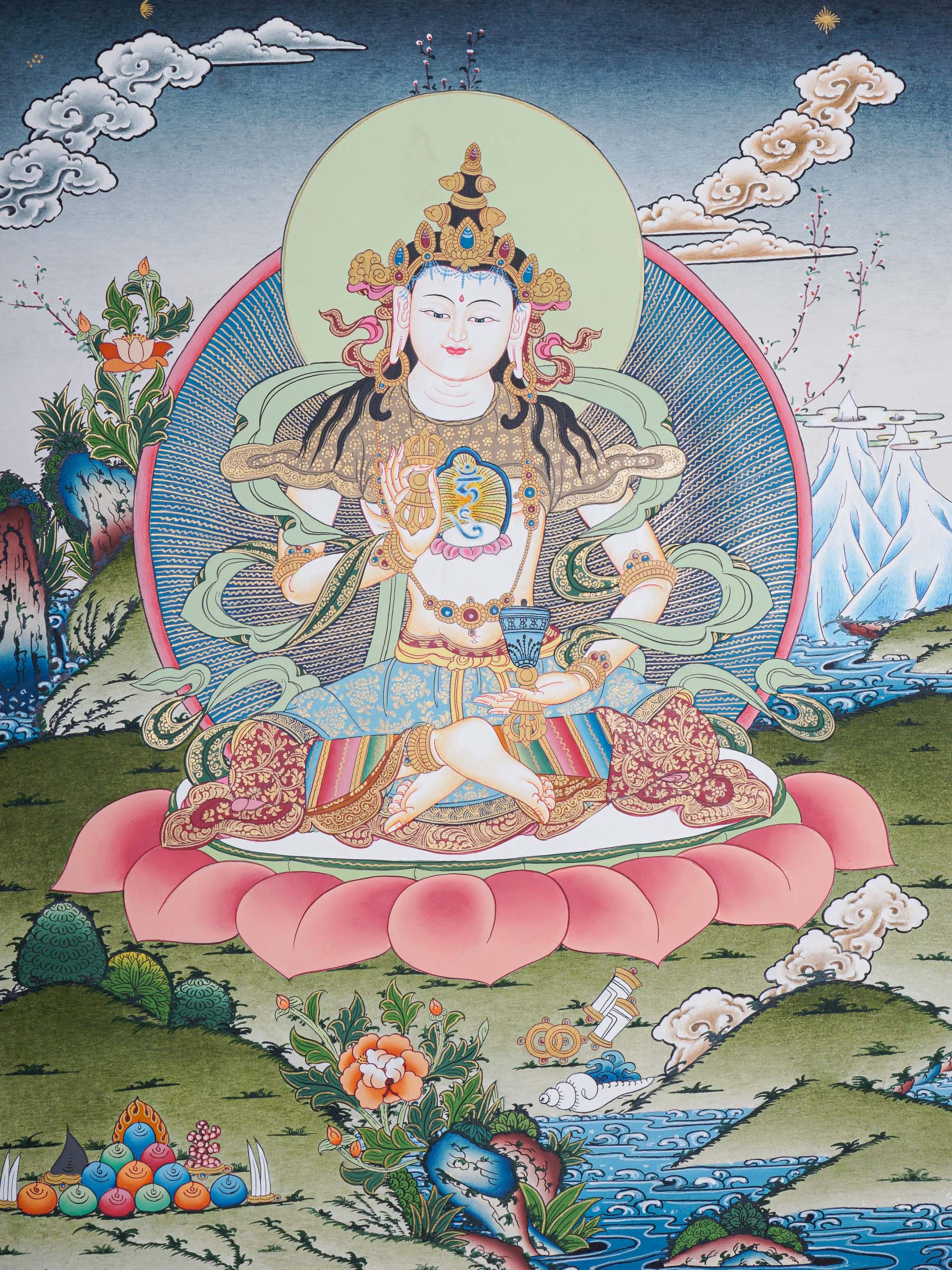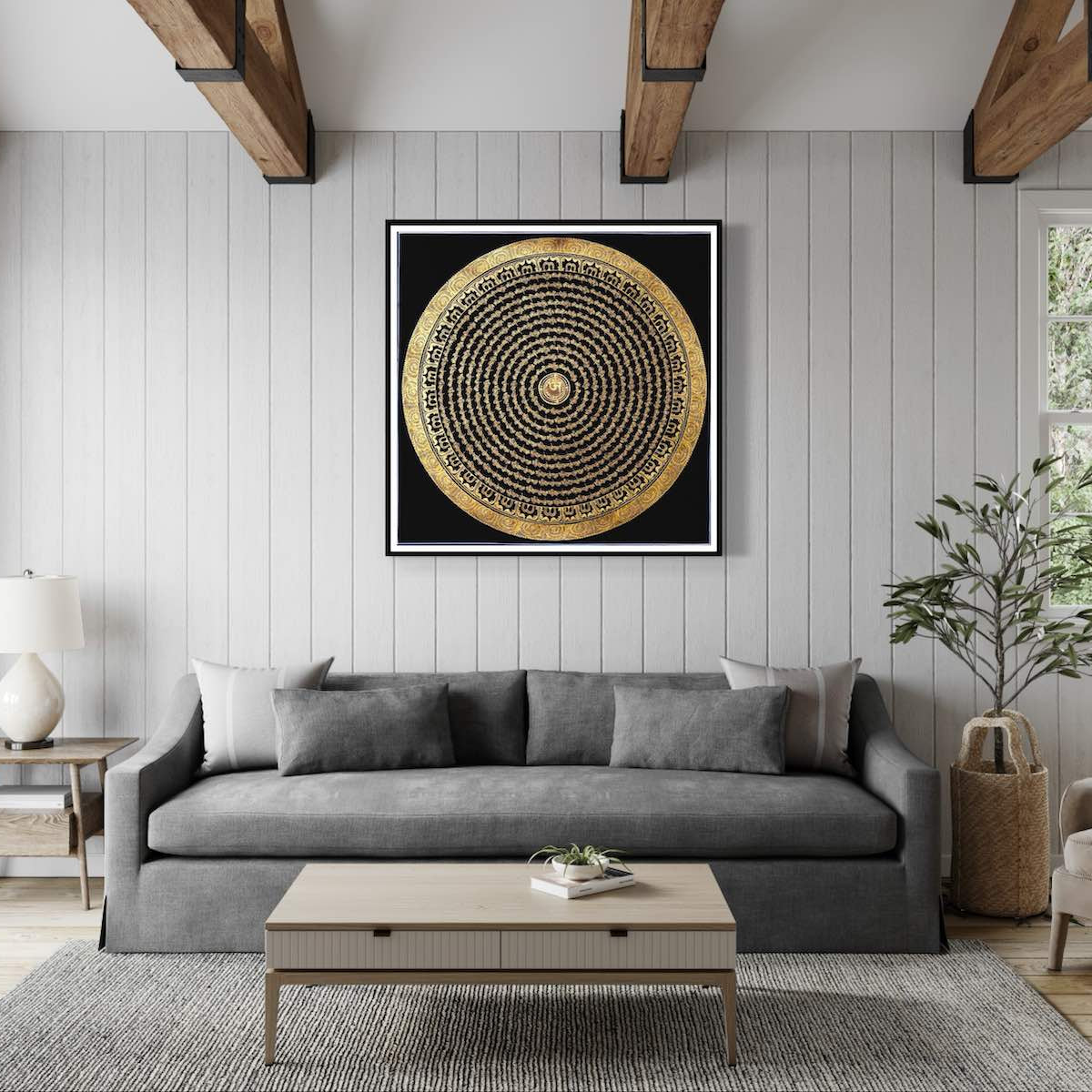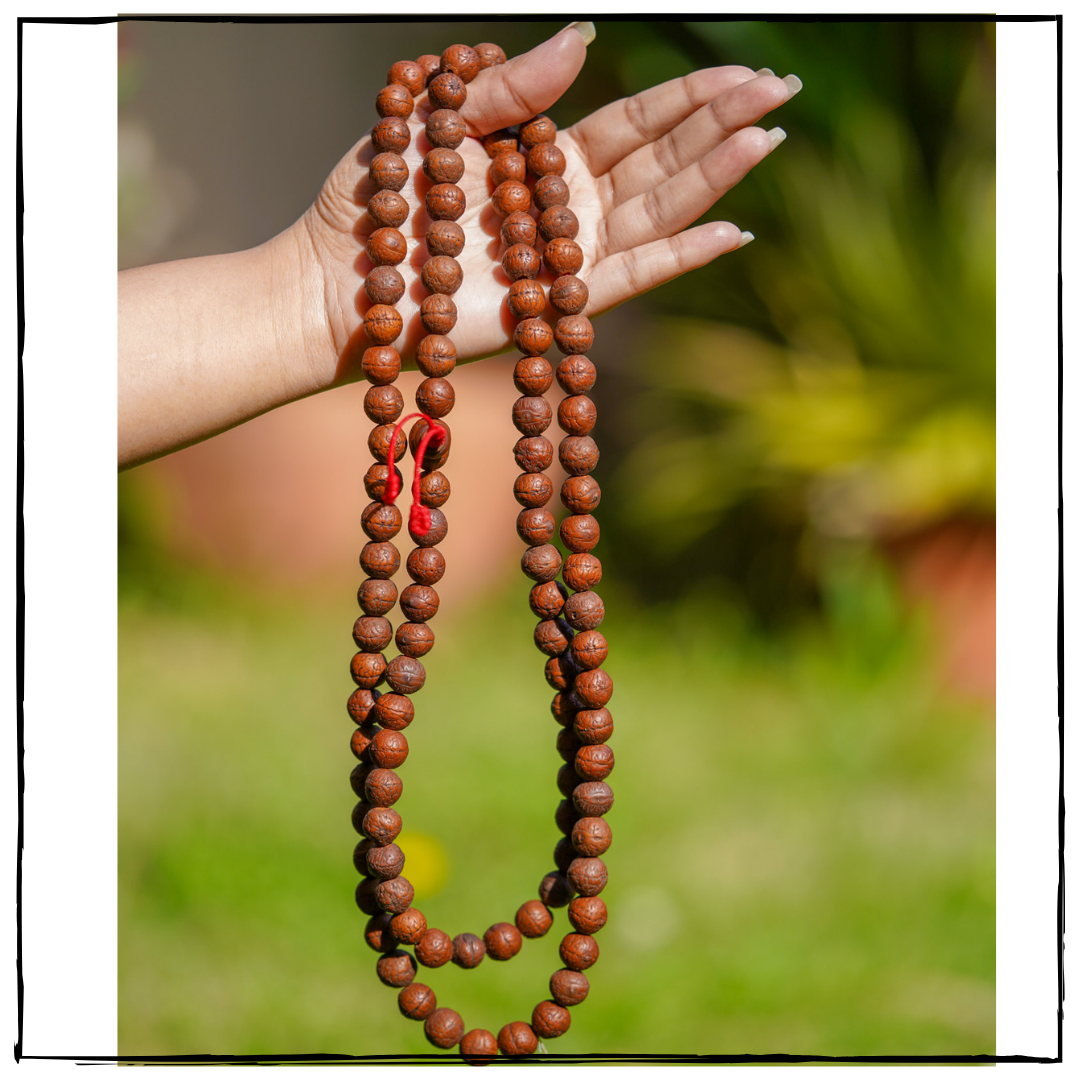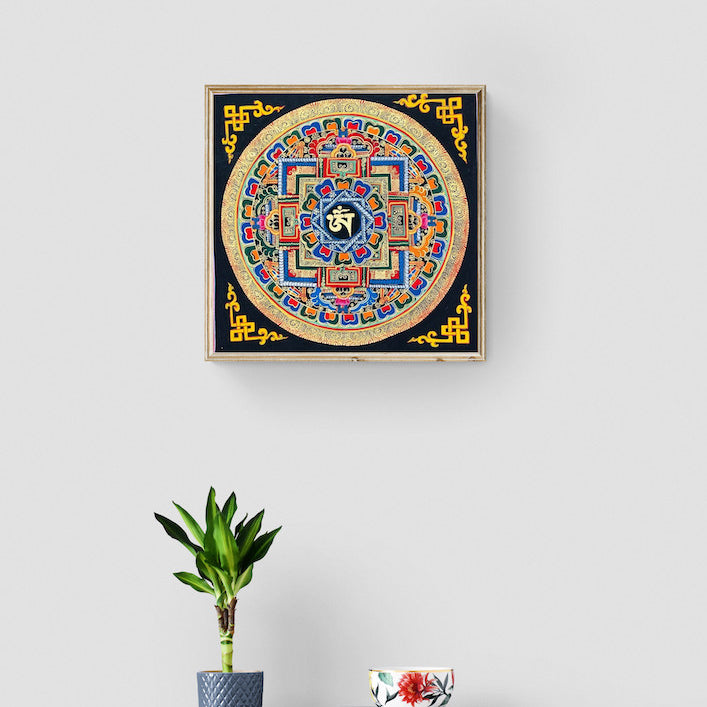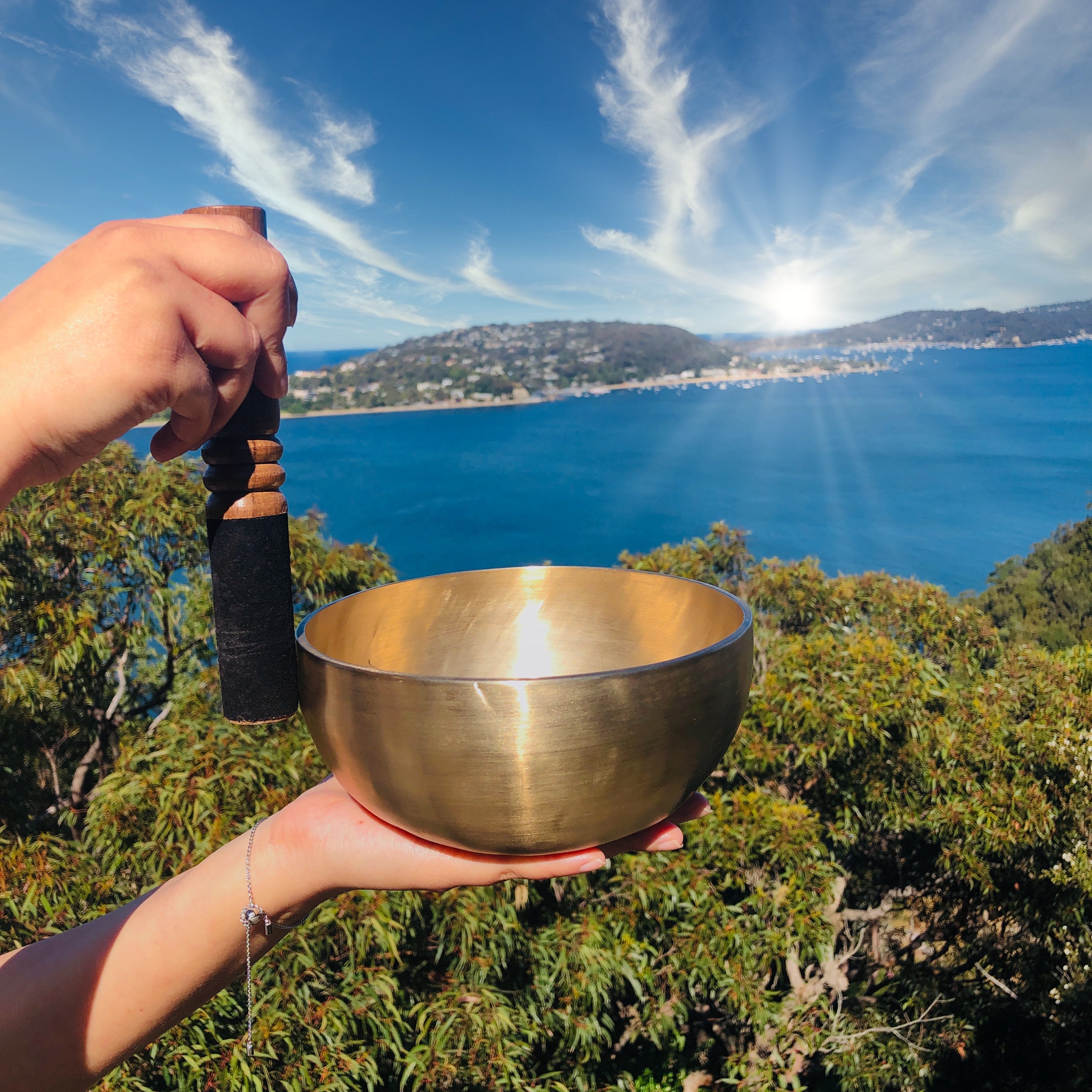Vajrasattva Thangka Painting
Couldn't load pickup availability
Description
The Vajrasattva Thangka is a traditional Tibetan Buddhist painting depicting a significant deity associated with purification. It is made with mineral pigments on cotton or silk and is known for its intricate details and vibrant colors. A powerful tool in Tibetan Buddhism, this painting serves both as an object of devotion and an aid in meditation and purification practices on the path to enlightenment.
Key Features:
- Symbolic Representation:Vajrasattva is commonly depicted sitting in a serene meditative pose, holding a vajra and bell symbolizing method and wisdom. His expression radiates serenity and compassion, embodying the essence of his teachings.
- Features: The Vajrasattva depiction showcases intricate adornments and representations of invincibility, strength, intelligence, and the concept of emptiness. The color white is used to symbolize purity and the act of purifying.
- Symbolism:Vajrasattva's 100-syllable mantra purifies through recitation, with the union of method and wisdom symbolized by the vajra and bell in his hands.
- Meditation Aid: Vajrasattva Thangkas are essential tools for purifying the mind and body during meditation and visualization. These sacred paintings are also integral to rituals and teachings, imparting the values of wisdom and compassion through their intricate details and symbolism.
Product Specification:
- Hand Painted
- Size: 65 cm x 40 cm
- Base: Cotton Canvas
- Origination: Nepal

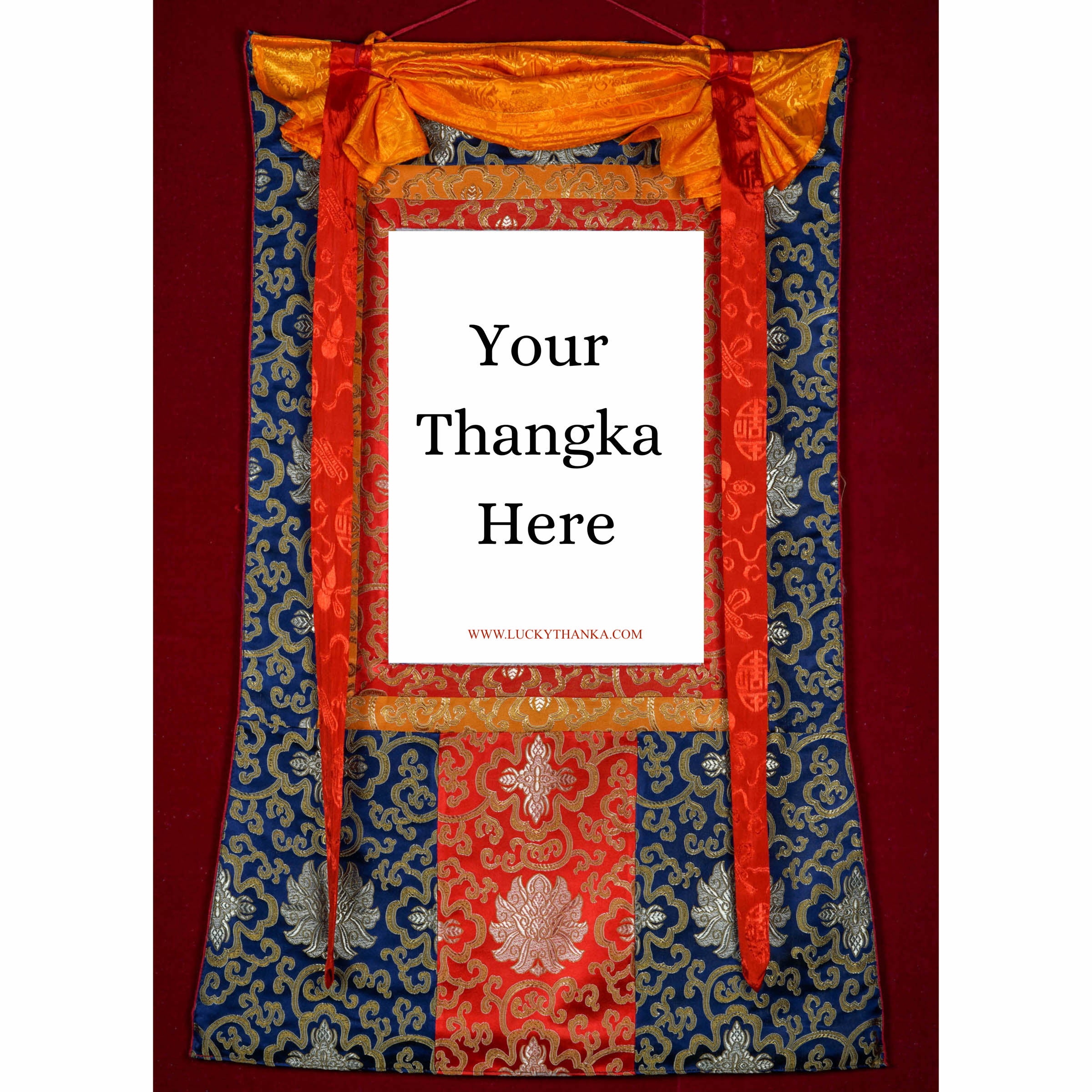
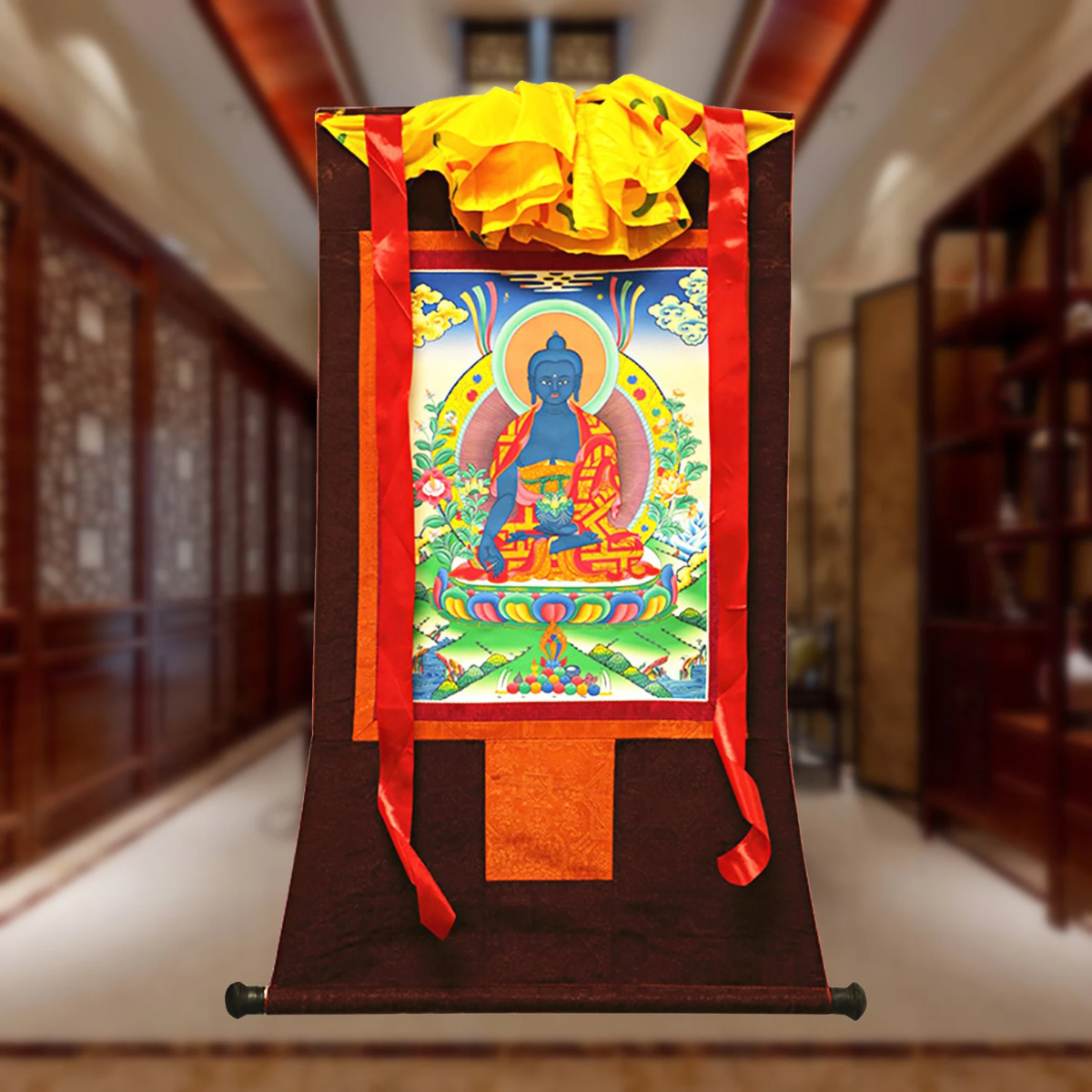
Hand Embroidery Brocade
Want to add a Brocade to your beautiful Thangka Painting? Traditional Style Brocade has been one of the most popular form of mounting as it has a greater religious merit.
Note: Make sure you have added the Thangka to your cart first.
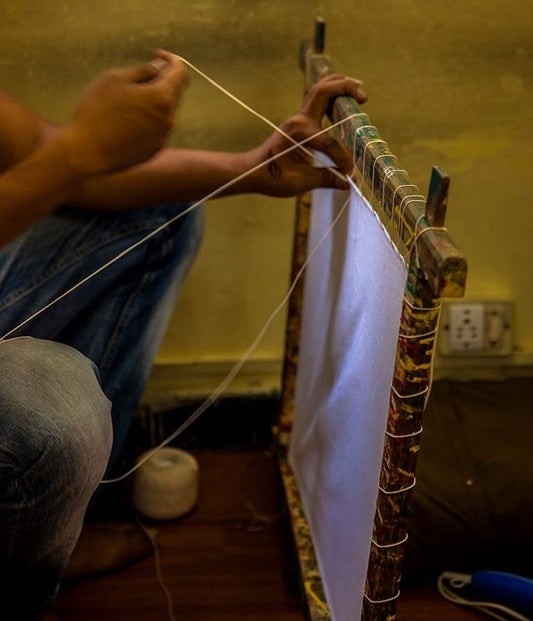
100% Cotton Canvas
Preparing the Cotton canvas before starting to paint a Thangka. This process includes washing, drying, stretching, sizing and everything needed to make a perfect base for the thangka to last for centuries.
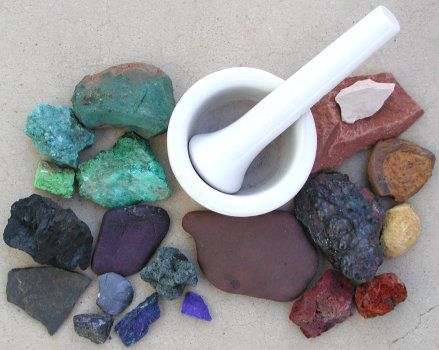
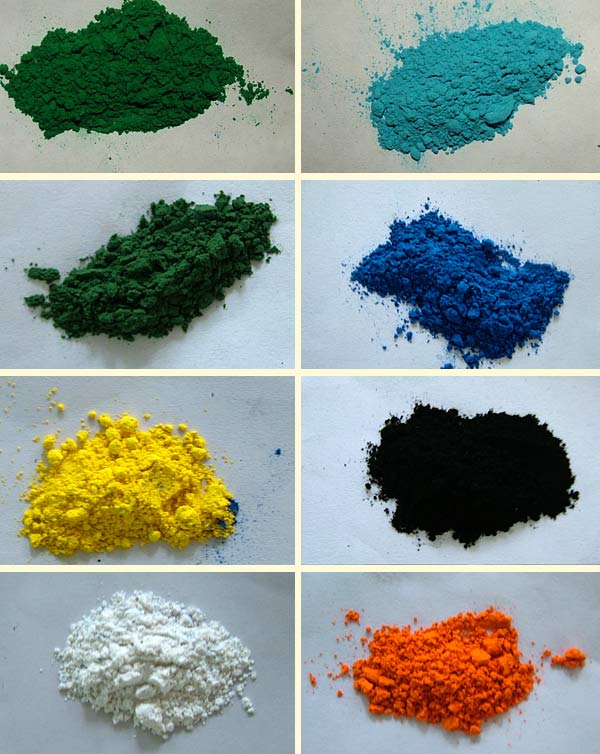
Natural Minerals
Thangka Paintings are painted using the natural minerals. These are firstly grind into the powder form and then used in the thangka as a paint.




